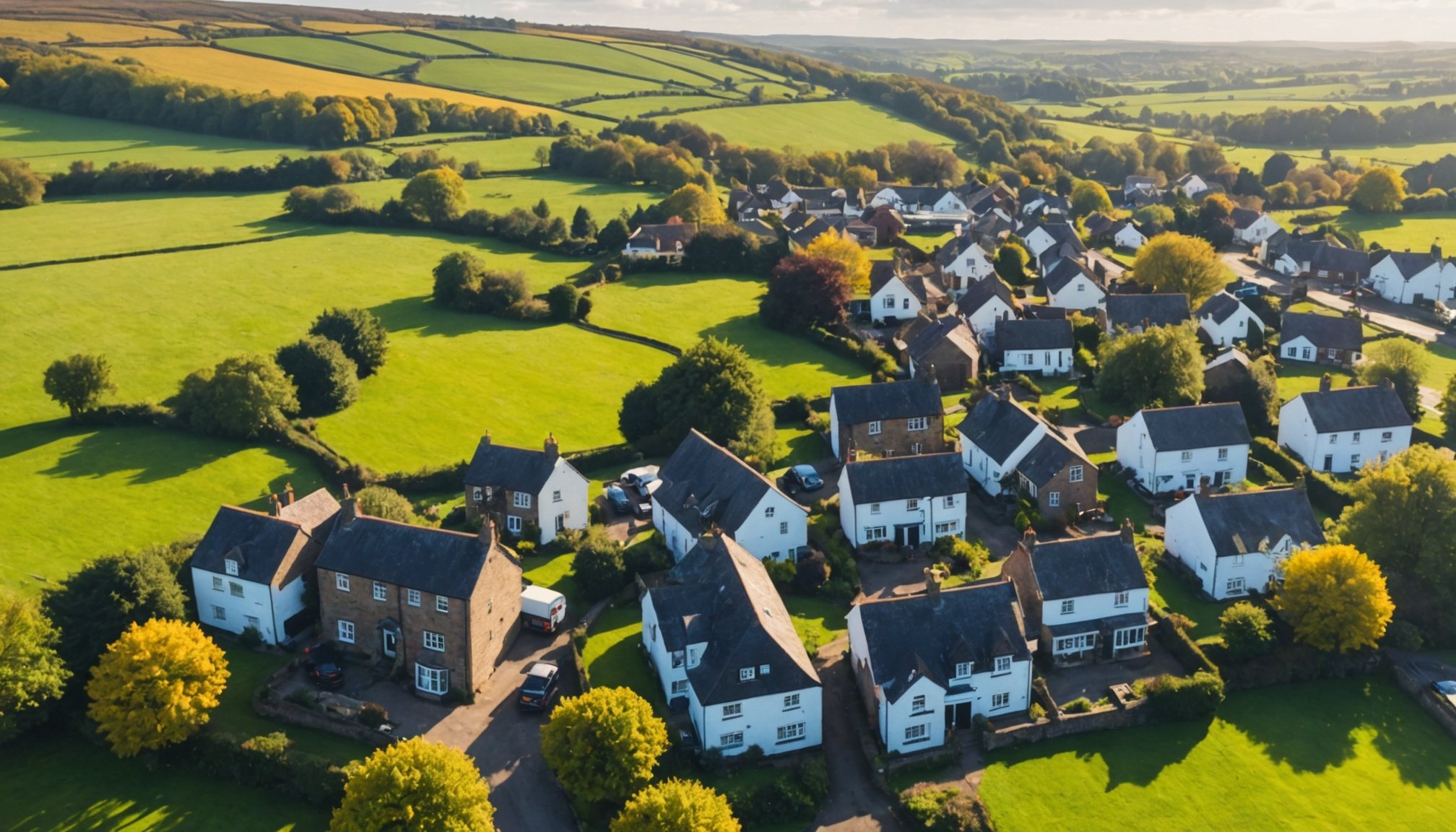Unlocking the Impact of Digital Connectivity on Property Values in the UK’s Remote Regions
In the modern era, digital connectivity is no longer a luxury but a necessity, especially when it comes to the value of properties in the UK’s remote regions. The advent of high-speed internet, gigabit-capable broadband, and advanced mobile coverage has significantly altered the real estate landscape. Here, we delve into how digital connectivity is transforming property values, the initiatives driving this change, and the practical implications for both residents and investors.
The Digital Divide and Its Impact on Property Values
The digital divide between urban and rural areas has long been a point of contention. In rural regions, the limited availability of broadband options and slow internet speeds have historically hindered property values. However, recent government initiatives and technological advancements are bridging this gap.
This might interest you : Unpacking brexit”s impact on london”s residential property development scene
Historical Challenges
Rural areas have traditionally faced significant challenges in accessing reliable internet services. The insufficient infrastructure landscape, characterized by limited ADSL and fibre broadband options, has resulted in slow internet speeds that are far from the high-speed connections enjoyed in urban areas[1].
Emerging Solutions
The introduction of 4G broadband and wireless broadband is revolutionizing internet access in rural areas. These technologies offer fast speeds and wide coverage, making them ideal for remote locations where traditional broadband infrastructure is costly or impractical to install. For instance, 4G broadband uses cellular towers to transmit data signals, eliminating the need for physical cables or wires[1].
Government Initiatives and Funding
The UK government has recognized the importance of digital connectivity in rural areas and has launched several initiatives to improve broadband access.
Key Government Programs
- Rural Broadband Initiative: Aims to provide high-speed internet access to 95% of UK homes and businesses by 2025. This initiative is crucial in bridging the digital divide and ensuring that rural communities have access to reliable internet services[2].
- Gigabit Broadband Voucher Scheme: Offers up to £3,500 in vouchers to support the installation of gigabit-capable broadband in rural areas. This scheme is part of the broader effort to ensure that even the hardest-to-reach areas can access high-speed internet[2].
- Project Gigabit: Targets 99% gigabit broadband coverage by 2030. This project is part of a larger commitment to upgrade broadband infrastructure in rural communities, with funding of up to £800 million allocated for this purpose[4].
Funding Mechanisms
The government has introduced various funding mechanisms to support the expansion of broadband infrastructure in rural areas:
- Rural Gigabit Connectivity (RGC) Program: Provides up to £3,500 per premises for service providers to build gigabit-capable broadband networks in rural areas. This program aims to reach 1 million homes and businesses by 2024[2].
- Rural Gigabit Voucher (RGV) Program: Offers vouchers worth up to £1,500 per household and £3,500 per small to medium-sized enterprise (SME) to support the cost of installing gigabit-capable broadband. This program focuses on connecting the hardest-to-reach 10% of UK premises[2].
Impact on Property Values
The improvement in digital connectivity is having a profound impact on property values in rural areas.
Enhanced Livability
High-speed internet access makes rural properties more attractive to potential buyers. Here are some ways in which digital connectivity enhances livability:
- Remote Work: With the rise of remote work, high-speed internet is no longer a luxury but a necessity. Properties with reliable broadband connections are more appealing to professionals who can work from home.
- Education and Healthcare: Access to high-speed internet enables residents to access online educational resources and healthcare services, improving the overall quality of life.
- Entertainment and Leisure: Fast internet speeds allow for seamless streaming and online gaming, making rural properties more enjoyable to live in.
Economic Benefits
Digital connectivity also has significant economic benefits for rural areas:
- Business Growth: High-speed internet enables businesses to operate more efficiently, attracting new enterprises and creating job opportunities.
- Real Estate Market: Properties with good broadband connectivity are more valuable. A study by Nottinghamshire County Council found that the deployment of full fibre connectivity has overwhelmingly positive impacts on both the number of people in the workforce and output per worker, contributing to significant economic growth[3].
Practical Insights and Actionable Advice
For those looking to invest in or improve properties in rural areas, here are some practical insights and actionable advice:
Assessing Broadband Availability
Before investing in a property, it is crucial to assess the broadband availability in the area. Here are some steps to take:
- Check Coverage: Use online tools provided by Ofcom and local authorities to check the broadband coverage in the area.
- Contact Providers: Reach out to telecoms providers to inquire about their plans for expanding broadband infrastructure in the region.
Leveraging Government Initiatives
Take advantage of government initiatives and funding schemes:
- Apply for Vouchers: If you are a resident or business in a rural area, apply for vouchers under the Gigabit Broadband Voucher Scheme or the Rural Gigabit Voucher Program.
- Collaborate with Local Authorities: Work with local authorities and network operators to advocate for better broadband infrastructure in your area.
Future-Proofing Properties
To future-proof your property, consider the following:
- Install Gigabit-Capable Broadband: If possible, install gigabit-capable broadband to ensure your property remains attractive in the long term.
- Invest in Mobile Connectivity: Ensure good mobile coverage by investing in mobile signal boosters or advocating for better mobile network infrastructure in your area.
Case Studies and Examples
Several regions in the UK are seeing significant improvements in digital connectivity, which in turn is impacting property values.
Nottinghamshire
Nottinghamshire County Council has made significant strides in improving digital connectivity. Their Digital Connectivity Framework includes initiatives such as the ‘Dig once’ policy to minimize repeated excavations for installing and maintaining broadband infrastructure. This approach not only reduces costs but also cuts greenhouse gas emissions. The council’s efforts have led to substantial improvements in broadband coverage, with over 90% of properties now having access to superfast or gigabit services[3].
Scotland
Scotland has also seen remarkable advances in digital connectivity. According to Ofcom’s Connected Nations report, 77% of Scottish homes now have access to gigabit-capable broadband connections. This has led to increased property values, especially in rural areas where high-speed internet was previously scarce. The report highlights that only 0.5% of premises in Scotland cannot access decent broadband, a significant reduction from previous years[5].
The impact of digital connectivity on property values in the UK’s remote regions is undeniable. As government initiatives and technological advancements continue to bridge the digital divide, rural properties are becoming more attractive and valuable.
Key Takeaways
- Government Initiatives: Programs like the Rural Broadband Initiative and Project Gigabit are crucial in improving broadband access in rural areas.
- Economic Benefits: High-speed internet access enhances livability, supports business growth, and contributes to economic development.
- Practical Action: Assess broadband availability, leverage government initiatives, and future-proof properties to maximize their value.
In the words of Thérèse Coffey, the then-Secretary of State for Rural Affairs, “Investing in rural infrastructure is crucial for economic growth and improving life in remote areas. Government efforts to expand broadband help close the digital divide, ensuring rural communities aren’t left behind”[4].
As the UK continues to invest in digital infrastructure, it is clear that the future of property values in rural areas is closely tied to the availability and quality of broadband services. Whether you are a resident, investor, or business owner, understanding and leveraging these advancements can significantly enhance the value and appeal of properties in these regions.











